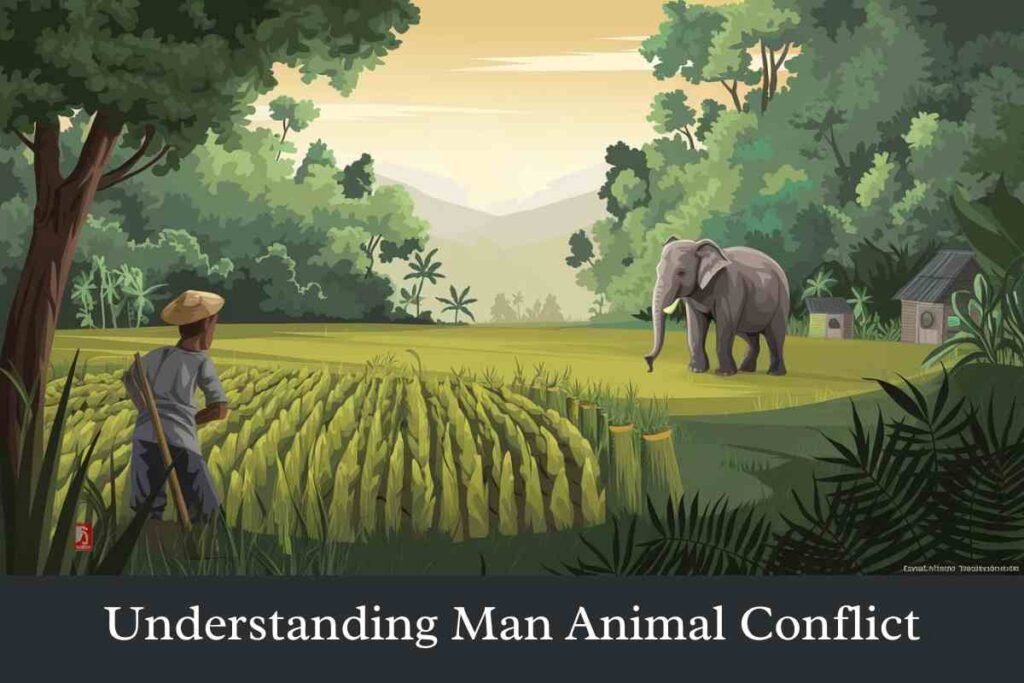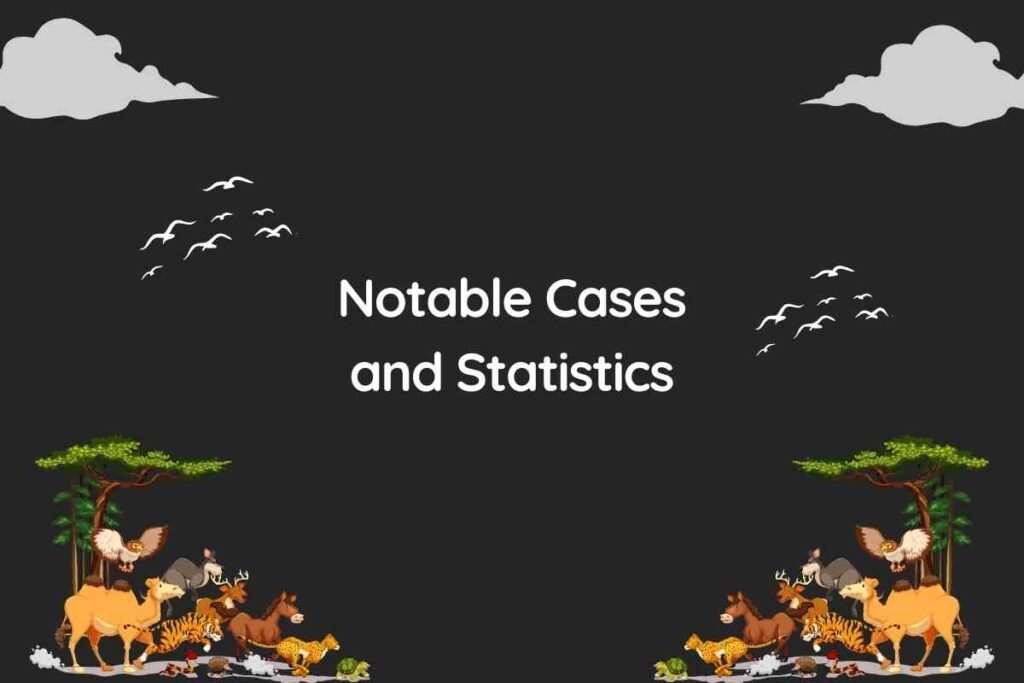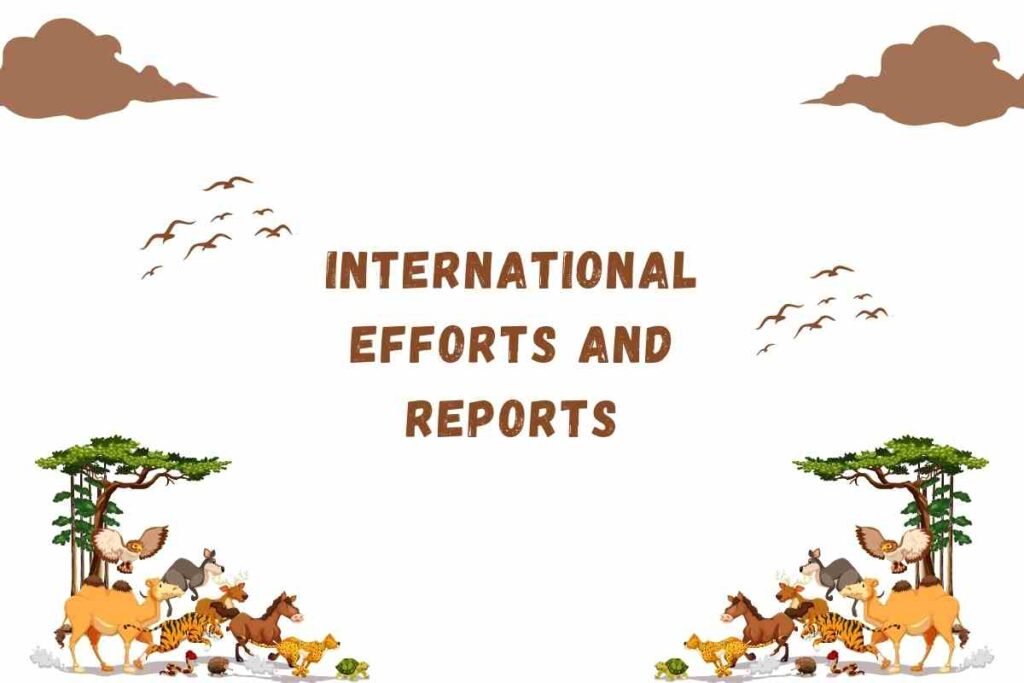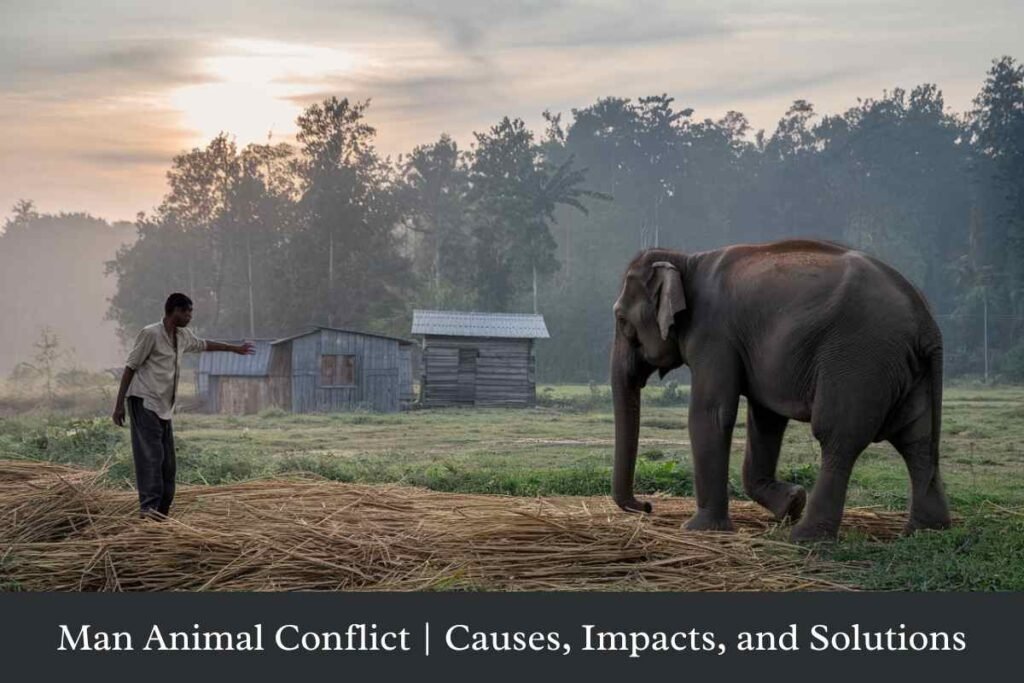Man-Animal Conflict refers to the negative interactions between humans and wildlife that result in harm to both parties.
These conflicts arise as human populations expand into wildlife habitats, leading to competition for resources, property damage, and even loss of life.
Managing these conflicts is crucial to ensuring coexistence between humans and wildlife while safeguarding biodiversity and ecosystems.
Understanding Man-Animal Conflict

Man animal conflict, often termed human-wildlife conflict, occurs when wildlife poses a threat to human interests or vice versa.
According to the World Wide Fund for Nature (WWF), such conflicts can affect human livelihoods, cultural life, and wildlife conservation efforts.
These interactions are not limited to terrestrial environments but are also observed in marine ecosystems.
Key Factors Contributing to Man-Animal Conflict
Several factors lead to man-animal conflict, including:
Habitat Loss and Fragmentation
Expanding human populations have led to deforestation, agriculture, and urbanization, reducing natural habitats for wildlife. This forces animals into human settlements in search of food and shelter.
Competition for Resources
Wildlife often competes with humans for crops, livestock, and water. Herbivores like elephants raid farmlands, while carnivores such as tigers prey on livestock, creating economic losses for communities.
Infrastructure Development
Highways, railways, and urban sprawl disrupt animal migration patterns, leading to accidents and fatalities. For instance, elephants and tigers are frequently killed by trains in regions like India.
Climate Change
Changes in weather patterns affect food availability, pushing wildlife closer to human habitats in search of sustenance.
Illegal Wildlife Trade
The poaching of animals for their parts disrupts ecosystems and leads to retaliation from affected communities.
Impacts of Man-Animal Conflict
Man-animal conflict has profound consequences for both humans and wildlife:
- Human Losses
Hundreds of people are killed or injured annually in encounters with wildlife. For instance, elephants and tigers are responsible for significant human fatalities in countries like India. - Wildlife Mortality
Animals are often killed in retaliation or accidents. Elephants face electrocution, poisoning, and train collisions, while tigers fall victim to poaching and unnatural deaths. - Economic Costs
Farmers and communities bear the brunt of crop damage, livestock loss, and property destruction caused by wildlife incursions. - Biodiversity Decline
Retaliatory killings and habitat destruction threaten endangered species, disrupting ecosystems and reducing biodiversity.
Notable Cases and Statistics

Elephants and Tigers in Conflict
In India, between 2018 and 2021, over 200 elephants were killed due to electrocution, train accidents, and poaching. During the same period, elephants were responsible for 1,579 human deaths. Tigers, on the other hand, killed 125 humans and faced threats from poaching and habitat loss.
Global Perspective
Man-animal conflict is not restricted to any single region. It occurs worldwide, affecting polar bears in the Arctic, lions in Africa, and marine mammals like seals and whales.
Strategies to Mitigate Man-Animal Conflict
Mitigating man-animal conflict requires a multi-pronged approach involving governments, local communities, and conservation organizations.
Community-Based Solutions
Translocation
Relocating problematic animals to safer areas can reduce conflict but often has limited long-term success.
Barriers and Fencing
Erecting fences, wildlife corridors, and beehive barriers can prevent wildlife from entering human settlements. For example, beehive fences deter elephants effectively.
Guard Dogs
Livestock-guarding dogs have proven effective in reducing predation by carnivores.
Government Interventions
Compensation Schemes
Governments can offer financial compensation to communities affected by wildlife damage, discouraging retaliatory killings.
Laws and Regulations
Enforcing stricter anti-poaching laws and land-use policies can help mitigate conflicts.
Public Awareness Campaigns
Educating communities about coexistence and sustainable practices can foster harmony between humans and wildlife.
Successful Examples
In Southern Africa’s Kavango Zambezi Transfrontier Conservation Area, installing lion-proof corrals reduced livestock killings by 95% and eliminated retaliatory killings of lions in 2016.
International Efforts and Reports

The 2021 report A Future for All, published by WWF and UNEP, highlights the need for human-wildlife coexistence. It emphasizes:
- Addressing habitat loss, illegal trade, and climate change.
- Promoting coexistence through community involvement.
- Showcasing successful models, such as lion-proof corrals, as examples to replicate globally.
Conclusion
Man-animal conflict poses significant challenges to biodiversity, human safety, and livelihoods. Addressing these conflicts requires a holistic approach that involves habitat preservation, community participation, and innovative mitigation strategies.
Ensuring coexistence between humans and wildlife is not just about conservation—it is vital for sustainable development and ecological balance.
Looking for more great reads? Check out our homepage maxxfour.in for trending articles and insightful blog posts on various topics.
FAQs
What is man animal conflict?
Man-animal conflict refers to negative interactions between humans and wildlife that harm either party, often arising from habitat encroachment and resource competition.
How does habitat loss contribute to man animal conflict?
Habitat loss forces animals into human settlements, increasing encounters and competition for resources like food and water.
What are common examples of man animal conflict?
Examples include elephants raiding crops, tigers preying on livestock, and polar bears scavenging in Arctic communities.
How can communities help mitigate man animal conflict?
Communities can use measures like barriers, guard dogs, and compensation schemes to reduce conflicts effectively.
Are there global efforts to address man animal conflict?
Yes, international organizations like WWF and UNEP promote coexistence strategies and highlight successful case studies in reports like A Future for All.
Why is reducing man animal conflict important?
Reducing conflicts benefits biodiversity, ensures human safety, and supports sustainable development.
What are the main threats to wildlife according to global reports?
Habitat loss, climate change, illegal trade, and human-wildlife conflicts are key threats identified in reports like A Future for All.
How can governments help mitigate man animal conflict?
Governments can create policies for land use, enforce anti-poaching laws, and support community-based conservation programs.







